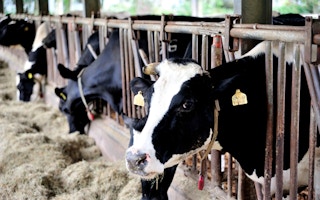Quite probably, if you’re reading this, you try to find ways of reducing your carbon foot-print. Perhaps you’re also a meat-eater. So, for the sake of the planet, should you ditch meat altogether? Or just eat white meat? Or eat only animals produced close to home?
The answer, says a new international study, is a bit more complicated than any of these. The researchers say the resources required to raise livestock and the impacts of farm animals on environments vary dramatically, depending on the animal, the type of food it provides, the kind of feed it consumes and where it lives.
Published in the Proceedings of the National Academy of Sciences (PNAS), the study assesses what farm animals eat in different regions; how well they convert their feed into milk, eggs and meat; and how much greenhouse gas they produce.
It is the work of scientists at the International Livestock Research Institute (ILRI), the Commonwealth Scientific and Industrial Research Organisation (CSIRO) and the International Institute for Applied Systems Analysis (IIASA). The initial work was funded by ILRI and the CGIAR Research Program on Climate Change, Agriculture and Food Security (CCAFS).
Perhaps surprisingly, the study shows that animals in much of the developing world require far more food to produce a kilo of protein than livestock in wealthy countries. It also shows that pork and poultry are being produced far more efficiently than milk and beef, while greenhouse gas emissions vary widely depending on the animal involved and the quality of its diet.
Frugal pigs and poultry
“If the problems are global, the solutions are almost all local and very situation-specific”, said Mario Herrero, lead author of the study.
It finds that, globally, monogastric livestock (species with a simple, single-chambered stomach, like pigs and poultry) are more efficient at converting feed into protein than cattle, sheep and goats (ruminants), regardless of the product involved or where the animals live.
Pork produces 24 kilos of carbon per kilo of edible protein, with poultry producing only 3.7 kilos – compared with anywhere from 58 to 1,000 kilos of carbon from ruminants. Cattle are the biggest source of greenhouse emissions from livestock globally, producing 77% of the total, against 10% for pigs and poultry.
The study shows how an animal’s diet makes a major difference in both feed efficiency and emission intensity. In arid regions of sub-Saharan Africa, for example, a cow may consume up to ten times more feed – mainly in the form of rangeland grasses – to produce a kilo of protein than a cow in a more developed country.
Production risks
However, almost all the 1.3 billion tons of grain consumed by livestock each year are fed to farm animals in Europe, North America, Eastern China and Latin America, mainly to pigs and poultry.
All of sub-Saharan Africa’s livestock combined eat only about 50 million tons of grain annually, relying more on grasses and “stovers,” the leaf and stalk residues of crops left in the field after harvest. Ruminants need up to five times more feed to produce a kilo of protein in the form of meat than a kilo of protein as milk.
The authors say the lower emission intensities in the pig and poultry sectors are driven largely by industrial production systems. But these pose significant risks to public health (from the possible transmission of zoonotic diseases from animals to people) and environmental risks. These include the greenhouse gases produced by the energy and transport needed for industrial livestock production, and the felling of forests to grow crops for feed.
Cattle grazing in arid parts of East Africa can release the equivalent of 1,000 kilos of carbon for every kilo of protein they produce. In much of the US and Europe that figure is around 10 kilos.
The authors say no single measurement is an absolute indicator of sustainability. For example, Africa’s low livestock feed efficiencies and high greenhouse gas emission intensities result largely from most animals’ consumption of vegetation inedible by humans.

















